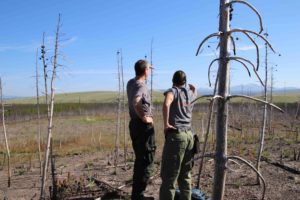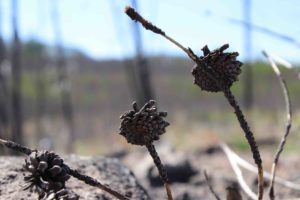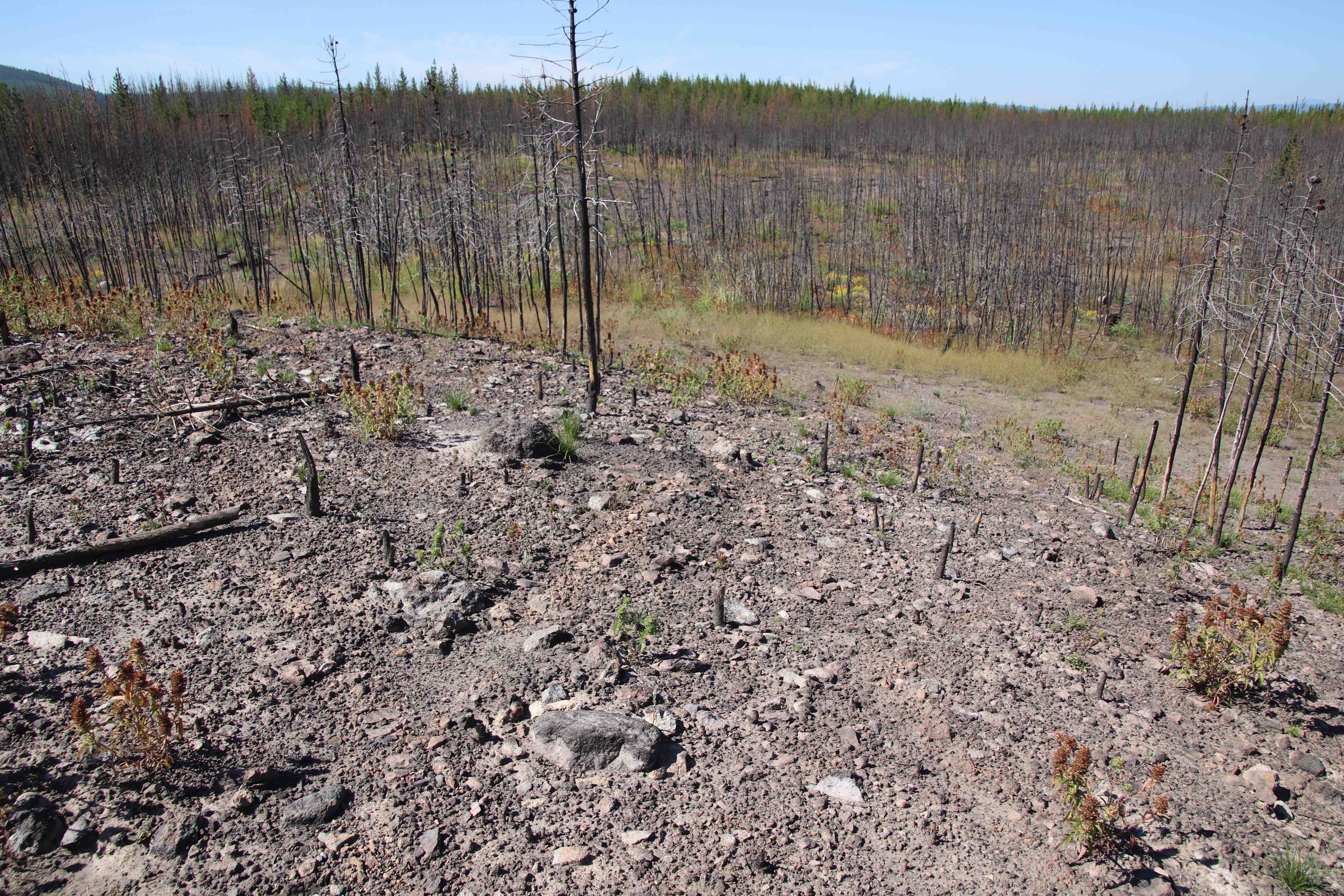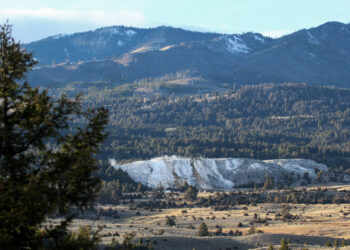Yellowstone’s evolving fire strategy
By Jessianne Wright EBS Contributor
YELLOWSTONE NATIONAL PARK, Wyo. – Becky Smith remembers the 1988 fires that burned 793,880 acres of Yellowstone National Park. Then eight years old, Smith was on a family trip in her grandmother’s box-van during the first days after the park reopened to the public following the burn.
“I was really awestruck,” she said. “I had never seen more than a campfire or a burning ditch. I thought the helicopters were really cool, along with seeing the flames on a hillside with elk grazing below.
“I don’t ever remember being scared while in the park, even though I remember seeing flames close to the roads and boardwalks,” she added. “It was a memorable experience for a young girl from North Dakota who had never been to Yellowstone, or even the mountains.”
Thirty years later, Smith serves as Yellowstone’s wildland fire ecologist. Having completed a degree in natural resource management at the University of Minnesota, Crookston, she says she’s often wondered about the impact her experience in ’88 had on her choice of profession.

Smith said she wasn’t surprised when she got the call in 2016, alerting her about a lightning-started fire burning near the western boundary. “I was surprised the meadows burned. Usually they don’t burn in the park,” she said. “It tells me how dry it was that year.”
In 2016, 22 fires covered more than 70,000 park acres, becoming the most active fire year since ’88, while the fire in question, known as the Maple fire, torched approximately 52,000 acres.
Standing in the overlap of the ’88 and 2016 fire scars on July 23, Smith gestured to the charred knobs that were once 28-year-old lodgepole pines. She pointed to red shadows on a darkened soil, indications of where large logs burned at high severity and left nothing behind.
But she also directed our attention below the hill to a stand of still-green timber. “Other areas didn’t burn as hot [in 2016],” she said, adding that some trees survived that year, and even others survived the ’88 blaze. “You can see how diverse the landscape will be.”
While perhaps unsurprising given the lack of precipitation that summer, the Maple fire was unprecedented in the years following the ’88 burn.
“What’s really significant for us about the Maple fire is that it’s the first significant fire we’ve had in the ’88 fire scar in 30 years,” said John Cataldo, the wildland fire management officer for Yellowstone.
He added that the fire started, established, and burned in its entirety in the ’88 scar. This was unique from previous fires, which hit the new growth and quickly burned out.
“We had to start looking at the ’88 fire in a new lens. It was no longer a barrier to fire,” Cataldo said. “Now the ’88 scar is in play.”
According to Smith and Cataldo, safety is always a priority when managing a fire in Yellowstone, but thanks to the 2009 federal fire policy, officials are able to manage fire for ecological benefit.
“Without fire, Yellowstone doesn’t exist as we know it,” Cataldo said. “Ecologically, it’s almost invariably good to have a fire here.”
In addition to impacts on nutrient cycling, fires aid in developing plant community composition and structure. Some native plants rely on fire to reproduce, such as the lodgepole pine and its serotinous cones.
Over the last 46 years, the park has averaged 26 fires per year. Of those, flames started by lightning are allowed to burn as long as there are no risks to human safety—it isn’t until developed areas are threatened that managers step in to suppress the flames. However, human-caused fires must be controlled or suppressed.
started by lightning are allowed to burn as long as there are no risks to human safety—it isn’t until developed areas are threatened that managers step in to suppress the flames. However, human-caused fires must be controlled or suppressed.
“It’s very important that even though fire is good, folks are very careful with fire in the park,” Cataldo said.
Prior to 1972, Yellowstone’s policy was to suppress every fire, but as paradigms changed, so too did fire management.
In 1972, naturally-ignited fires were allowed to burn in limited areas of the park, and slowly those areas became larger. Aside from a brief period from 1988 to 1992, when the “let it burn” policy was reviewed, this has remained the protocol.
Currently the federal fire policy is up for scheduled review after a decade of use, and policy makers are seeking input from managers and officials.
“With 80 percent of our fires started by lightning, I’m comfortable with the policy as it is,” Cataldo said. “We’re going to get the fire we need.”
Instead of seeking a policy change, Cataldo said taking advantage of modern technology is an exciting option for the future. Specifically, he referenced early conversations about using drones to manage fire in national parks.
“Fire’s interesting in that we have a lot of new technology that we use and that’s all changed since ’88,” Cataldo said. “But we’re still depending on people to use them.”













